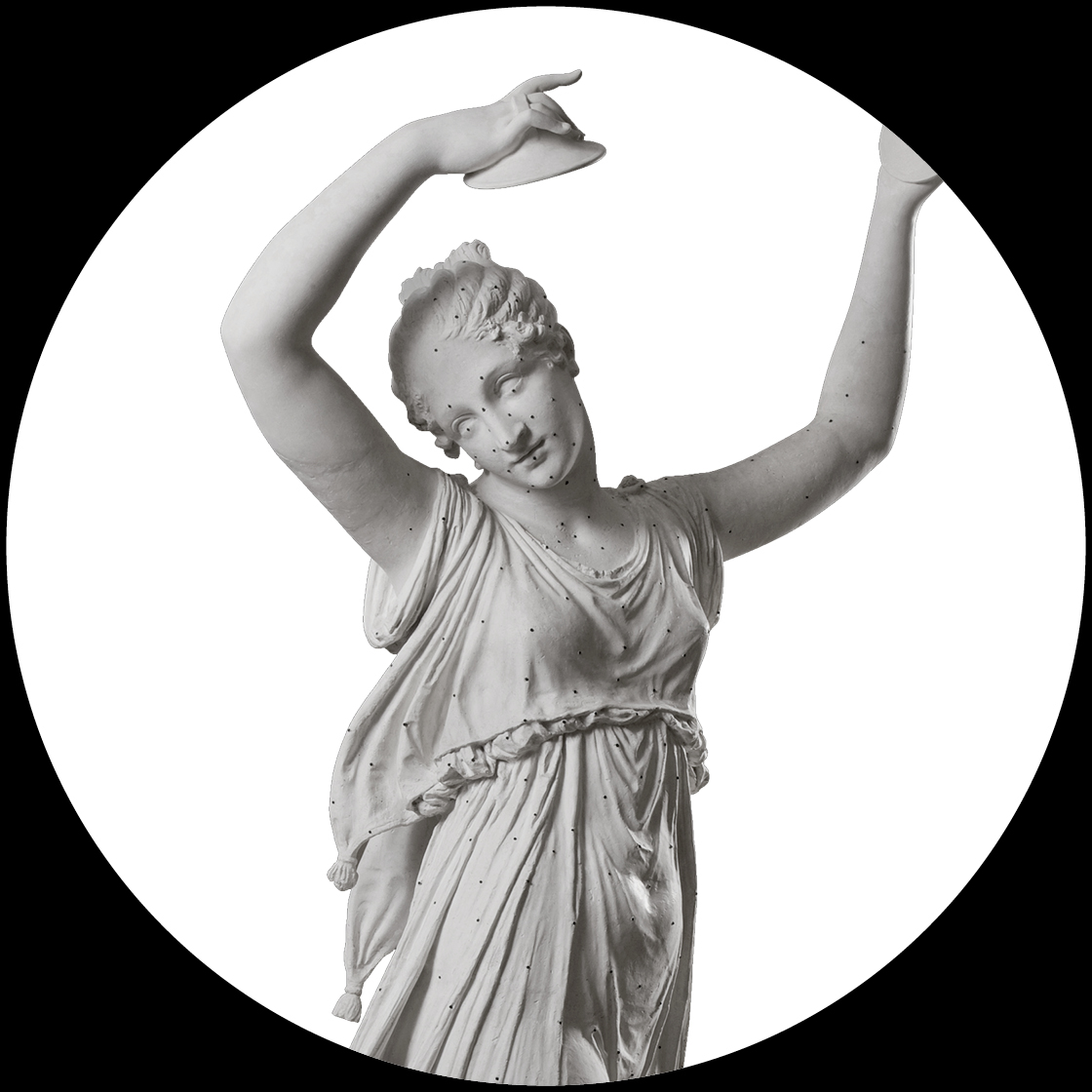Antonio Canova
Venus and Adonis
1794
Plaster
Location
Gypsotheca, Nineteenth century wing
Venus and Adonis was sculpted by Canova between 1789 and 1794 on commission by marquis Francesco Berio, that placed it in a small temple in the garden of his palace in Naples. After his death it was purchased by colonel Guillaume Favre. At present, is it is displayed at the Musée d’Art et Historie in Geneva.
Even this time the artist picked a subject from Greek mythology. He decided to tell the story of Adonis and Venus and capture the moment where the two lovers say goodbye before his hunting trip, that will result in his death. The moment the artist decided to depict is not the “pathos” moment of the story but the moment just before it. He does so to create a state of absolute rigor and balance, true to neoclassical canons. The piece is a true masterpiece in this sense, it expresses the Winckelmannian grace and ideal beauty at its highest degree.
The masculine figure, on which Venus leans on like if it were a column, dominates the sculptural group. Adonis’s expression is slightly gloomy, but you can see a faint smile peeking through, almost as if he wanted to reassure her by hugging her tight. Venus looks as if she is aware of the tragic destiny that awaits her lover and seems to want to keep him close to spare him from his end. The dog, laying under them represents loyalty and recalls the hunt that is about to happen. His rough fur creates a sharp contrast with the smooth skind of the two characters. The intimate and delicate scene seems to take place outside the myth and appears to belong to the earthly love.
● Inventory Number
66
● Dimensions
183,6x60x87 cm
● Ownership
Fondazione Canova onlus, Possagno (TV)
● Marble
Musée d’Art et l’Historie, Geneva (CH)

e appartenere all’amore terreno”





